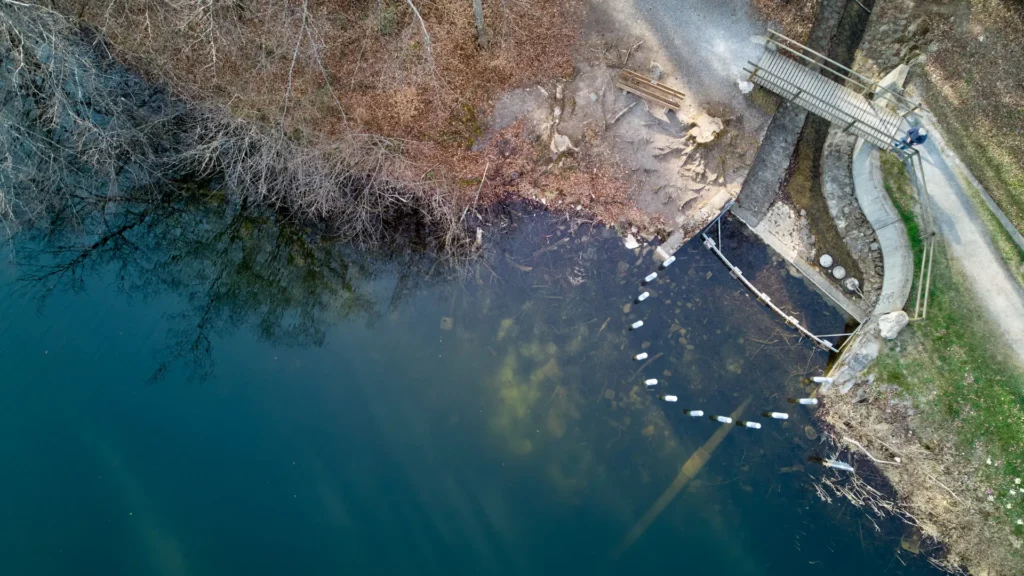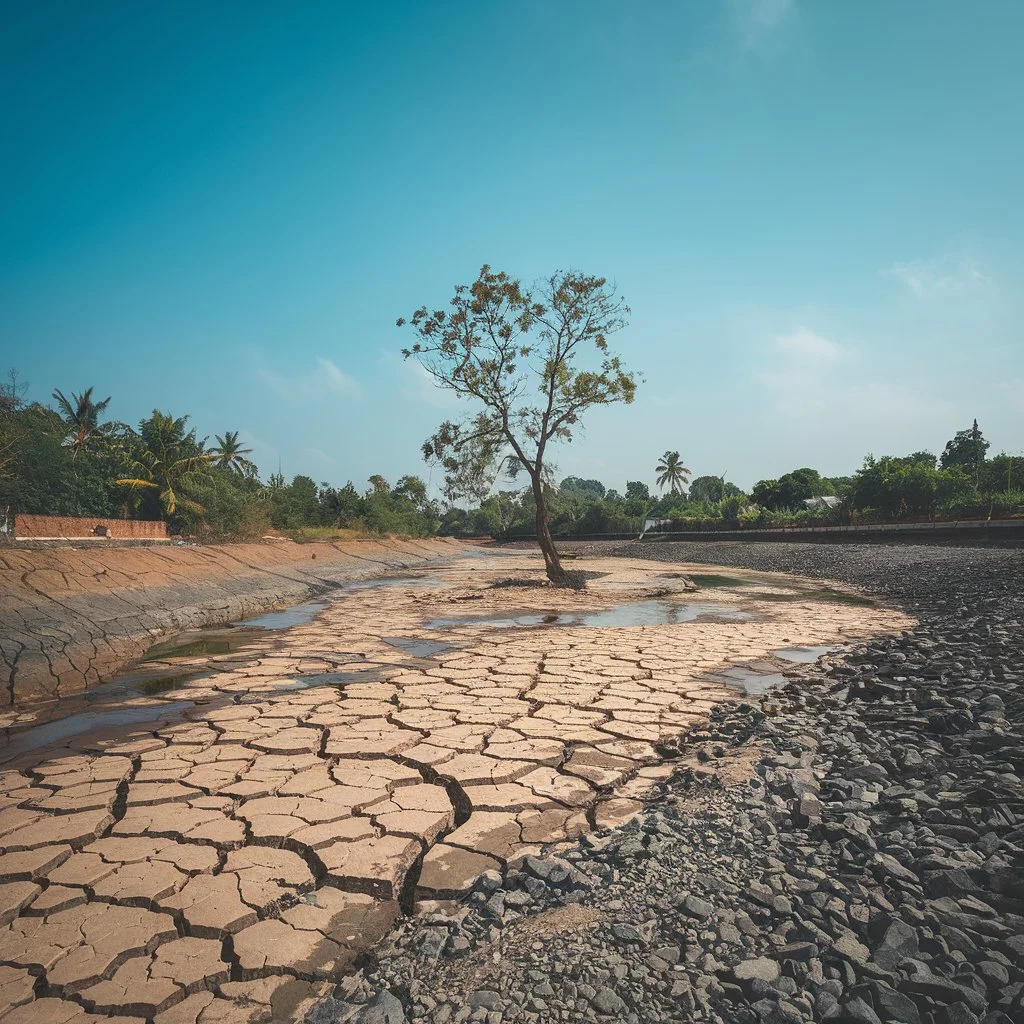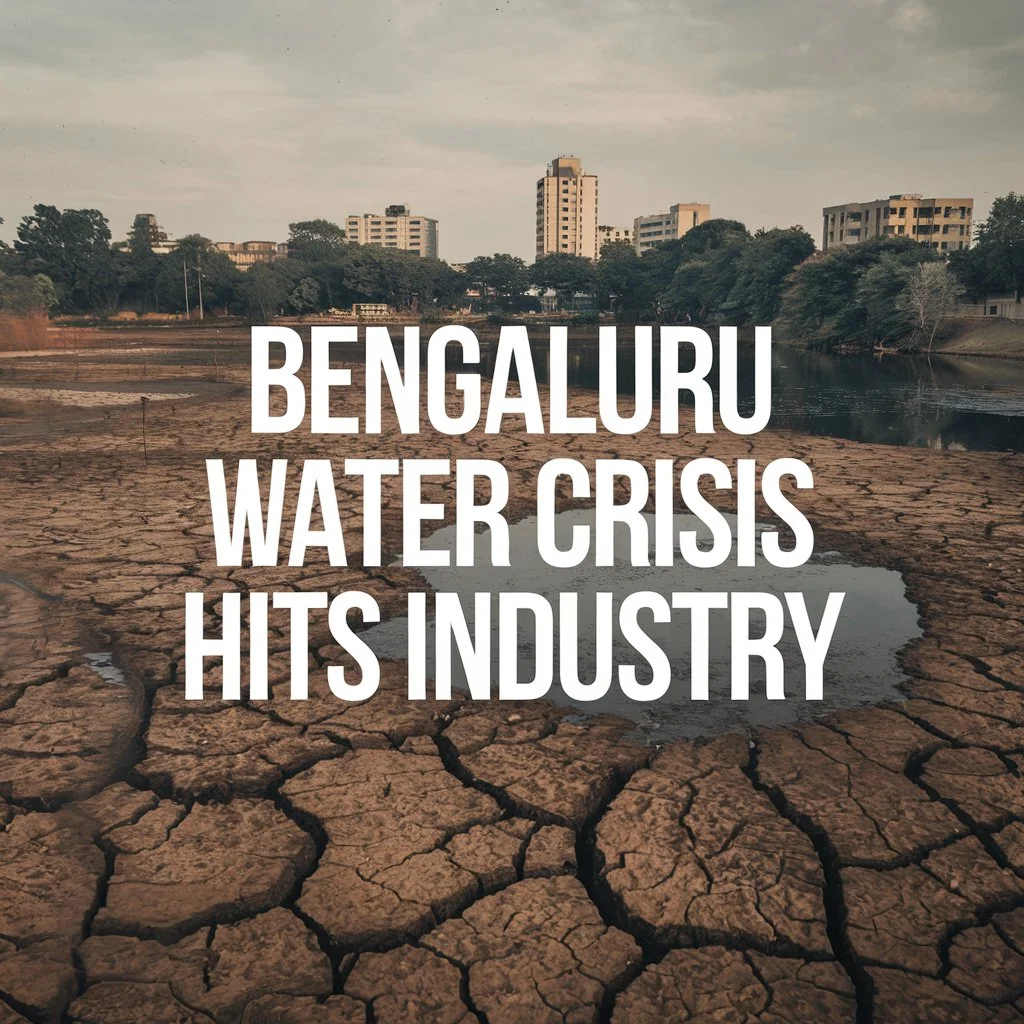Once known as India’s “Garden City,” Bengaluru is now dealing with a severe water crisis. During March, Bengaluru faced a serious water shortage as half of its 12,000+ public borewells dried up. The city relies on water from the Cauvery River, which is pumped across 100 kilometres and up a steep elevation. However, this water only reaches the city’s central areas, leaving the rapidly growing outskirts dependent on borewells and water tankers.
By early March, many of these borewells were failing. The lack of rain from the previous year, combined with efforts to drain lakes for desilting, led to a water shortfall of 250-600 million litres per day (MLD). As a result, residents struggled to get enough water for daily use, and businesses faced operational challenges due to limited water supply.

Moreover, people are putting pressure on an ageing water infrastructure that can no longer meet the city’s needs. Industries, which are also heavy water users, contribute to this strain by using large amounts of water and polluting the remaining sources. Bengaluru urgently needs solutions to conserve water and make industries more sustainable. Without immediate action, the city’s water problems will only get worse, impacting the lives of millions and the future of its economy.
Here’s How We Can Help You with Wastewater Management!
The roots of Bangalore’s water woes and the city’s transformation into a major tech hub have attracted millions of people from across the country, leading to unprecedented population growth. With nearly 13 million residents, Bangalore’s water demand has skyrocketed. This growth has put enormous pressure on the city’s infrastructure, which was not designed to handle such a large influx of people. UrbanisationUrbanisationUrbanization has also drastically altered Bangalore’s landscape. The city once dotted with lakes and green spaces, now sees its water bodies disappearing, either dried up or polluted by industrial waste. Climate change compounds the problem, leading to irregular rainfall patterns.
This further depleted the groundwater levels, leaving residents and industries heavily dependent on dwindling freshwater supplies. Major Contributors to Water Stress Bangalore’s industrial sector is a significant player in the city’s water consumption. Water is an essential component for daily operations in industries ranging from textiles and chemicals to pharmaceuticals and food processing. But industries aren’t just water consumers—they are also major polluters. Untreated wastewater discharged into the environment has contaminated water bodies and groundwater reserves, making it even harder for the city to meet its water needs. As water availability decreases, businesses are now finding themselves in a precarious situation.

Water shortages lead to reduced productivity, increased operational costs, and, in some cases, the relocation of industries to areas with more reliable water sources. The strain on the city’s water resources is a clear indicator that change is urgently needed. This is where Zero Liquid Discharge (ZLD) steps in as a potential game-changer. It is an innovative solution that has the potential to mitigate Bangalore’s water crisis by tackling industrial water consumption and pollution head-on. The concept of ZLD revolves around the idea of recycling and reusing wastewater within industries. Instead of discharging untreated or partially treated water into the environment, ZLD systems treat wastewater to the point where it can be reused in the industrial process, leaving no liquid waste behind. In essence, ZLD ensures that industries become water-efficient and sustainable.
By recycling wastewater, companies significantly reduce their dependence on freshwater resources, helping conserve every drop of water—a need that is increasingly critical in Bangalore’s context. Furthermore, ZLD minimises the environmental footprint of industries by preventing water pollution and promoting cleaner, greener industrial practices.
Get In Touch With Us Today for ZLD Solutions!
The effectiveness of ZLD has already been proven in several locations. In the textile industry, where water usage is significantly high, ZLD has been implemented with great success. For instance, many textile units in Tirupur, Tamil Nadu, a major garment manufacturing hub, have adopted ZLD to curb water pollution and reuse water efficiently. This model can easily be replicated in Bangalore’s industrial sectors. Bangalore itself is beginning to see the benefits of ZLD. Some leading technology parks and industrial complexes have started implementing ZLD systems to meet their water needs.
By adopting ZLD, these industries are reducing their reliance on freshwater and contributing to water conservation efforts. However, the adoption rate remains slow, and scaling this technology across the city’s industrial sector is crucial to create a broader impact.
The ongoing water crisis calls for more than just regulatory measures—it demands a shift toward innovative, green technologies that can secure Bangalore’s water future. Technologies such as Scaleban represent a new era of industrial sustainability. These systems leverage reusing high TDS, ETP treated water, RO Reject, MEE Condensate, and other cooling towers blowdown wastewater as makeup to cooling towers and operate it at 20 high COC which results in eliminating the need for freshwater and reducing CT blowdown by 90%. Such technologies align with the global movement toward a circular economy, where waste is minimised, and resources are reused efficiently.
Get In Touch With Us Today for ZLD Solutions!
Moreover, adopting these solutions not only helps industries but also benefits communities by improving water quality and availability. Reduced pollution in water bodies means cleaner water for Bangalore’s residents, while sustainable industrial practices ensure that businesses can thrive without depleting natural resources.
To truly address the Bangalore water crisis, policy reforms are also very essential. The government must incentivize industries to adopt ZLD and similar technologies by offering subsidies or tax breaks. Strict regulations on industrial water consumption and wastewater discharge must also be enforced to ensure compliance. However, policy alone will not solve the problem. Industry cooperation is vital. Businesses must recognize that sustainable water management is not just an environmental responsibility but a long-term strategy for success. By investing in ZLD systems, industries can reduce their operational risks, lower their water bills, and improve their public image as eco-conscious entities.
Lastly, community awareness is key. The residents of Bangalore need to be informed about the importance of water conservation and the role that industries play in addressing the crisis. Public pressure can push industries and governments to prioritise sustainable water management.

The Bangalore water crisis is a multifaceted issue that requires immediate and sustained action. Rapid urbanisation, population growth, industrial consumption, and climate change have all contributed to the city’s dwindling water resources. But solutions like Zero Liquid Discharge offer hope. By recycling & reusing wastewater, industries can drastically reduce their freshwater consumption, curbing pollution and conserving water in the process. As Bangalore looks to the future, the integration of innovative, green technologies, coupled with strong policy reforms, industry collaboration, and community engagement, will be essential in securing the city’s water supply for generations to come. It’s time for Bangalore to act decisively, ensuring that every drop counts.
